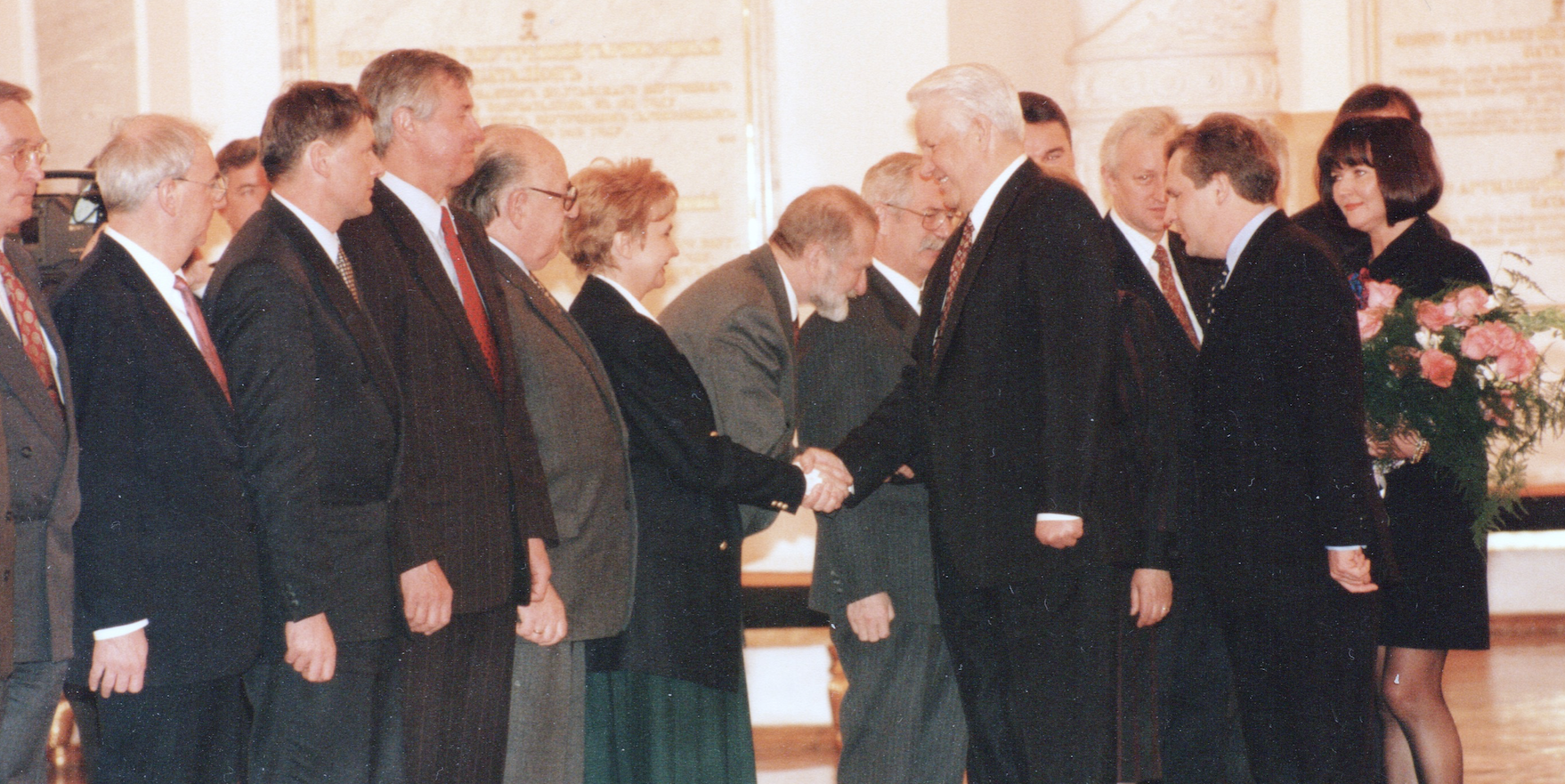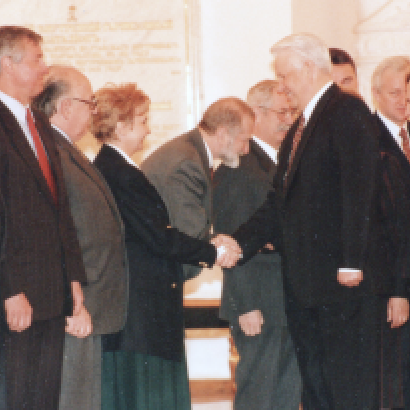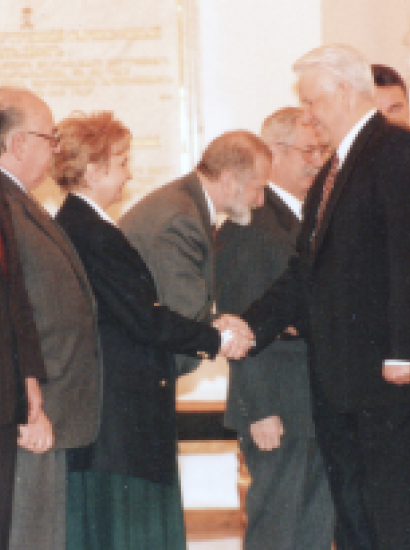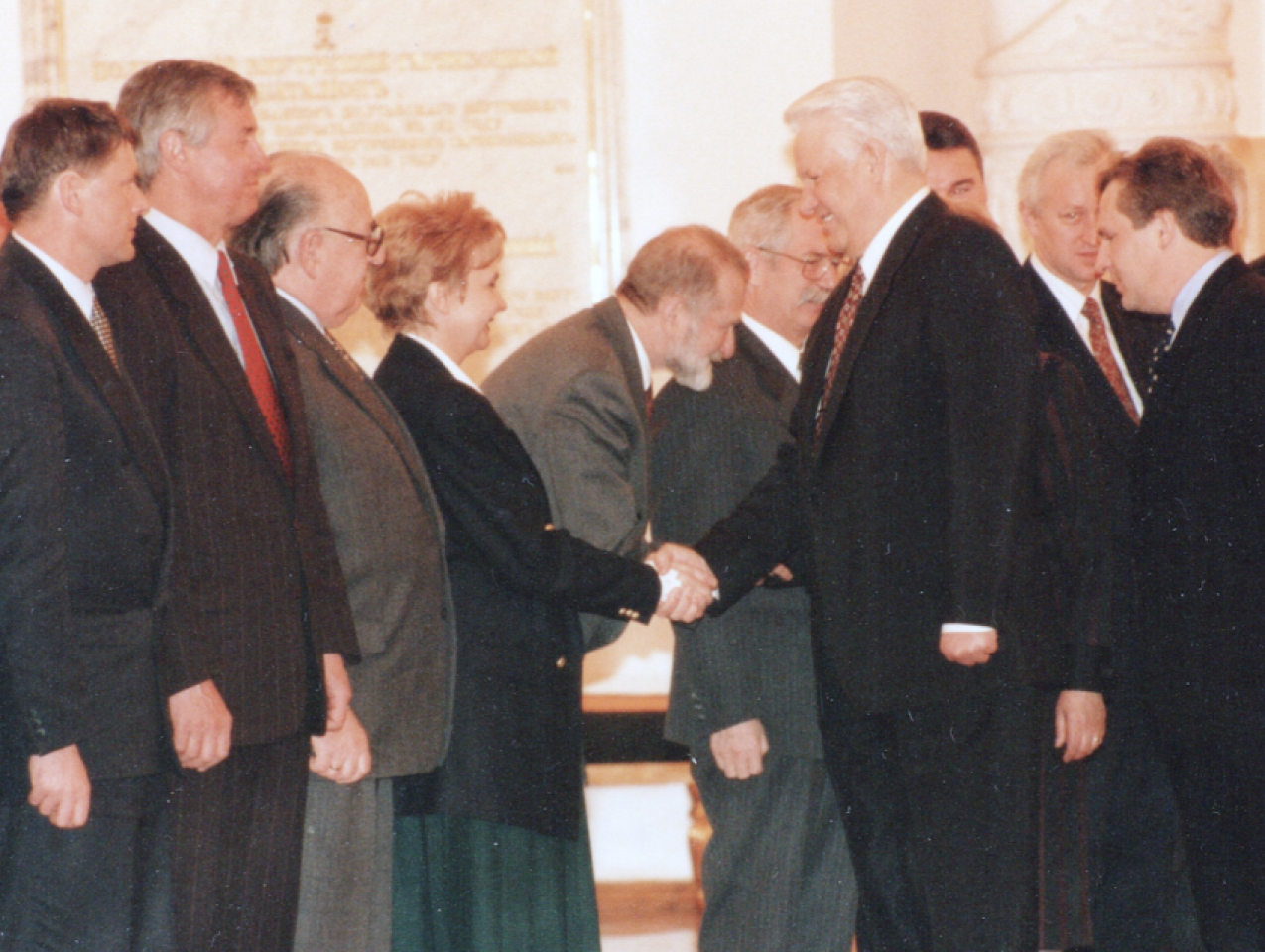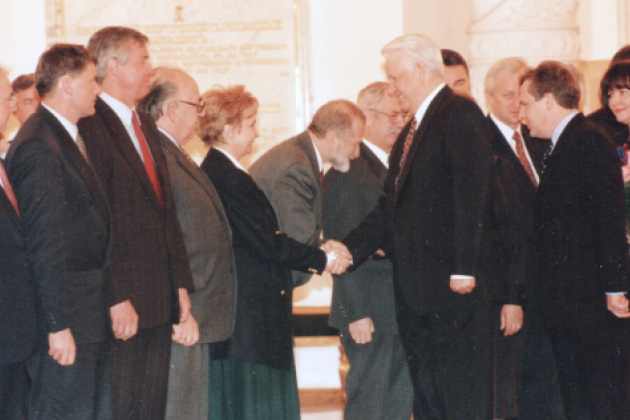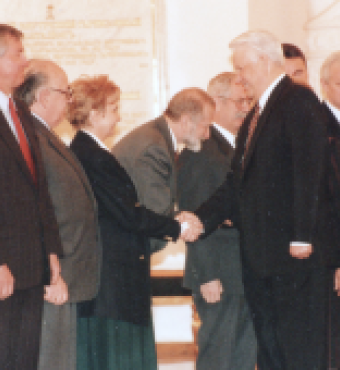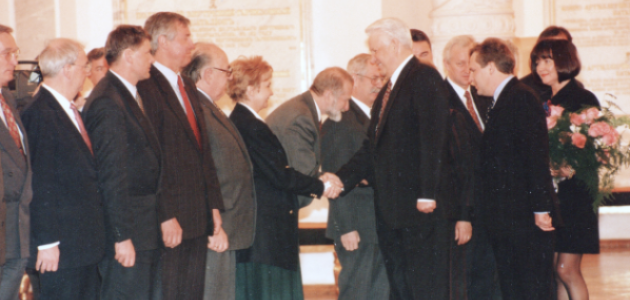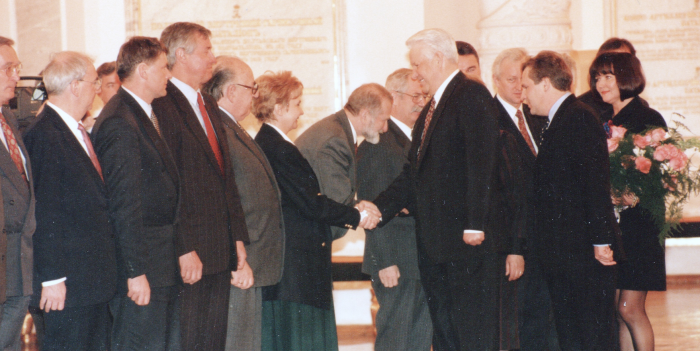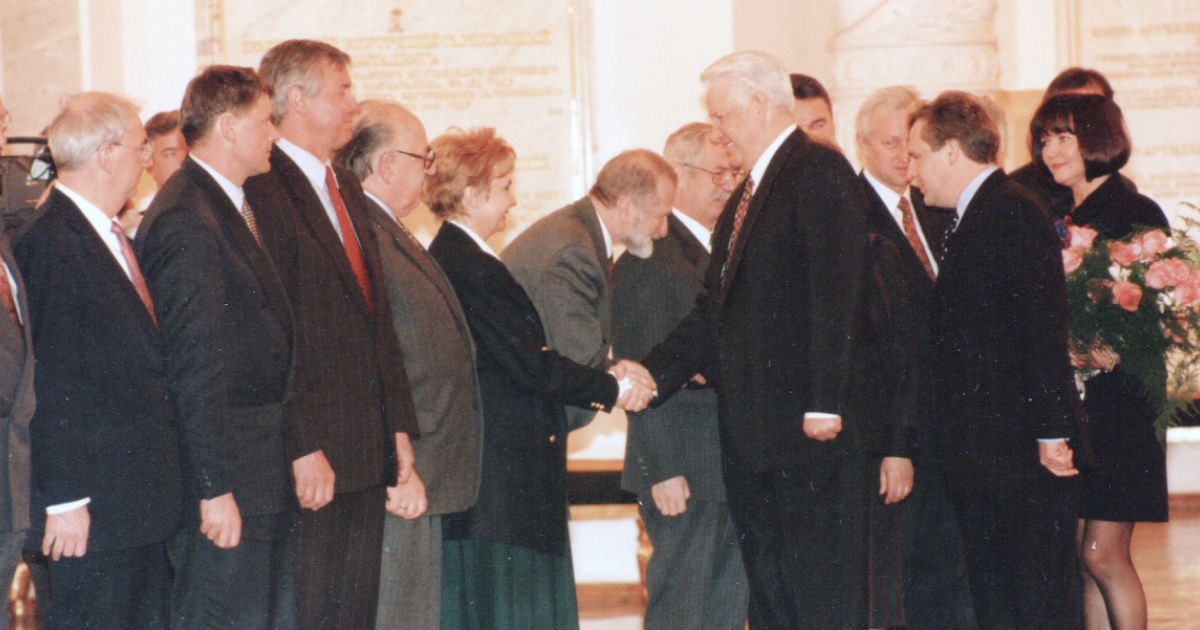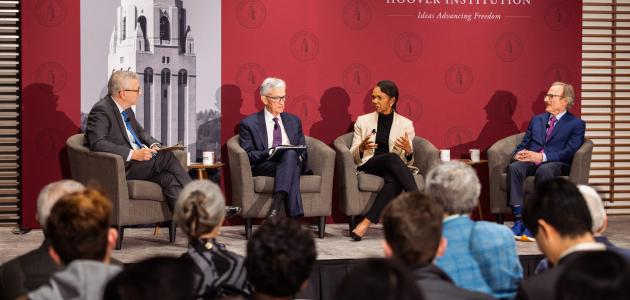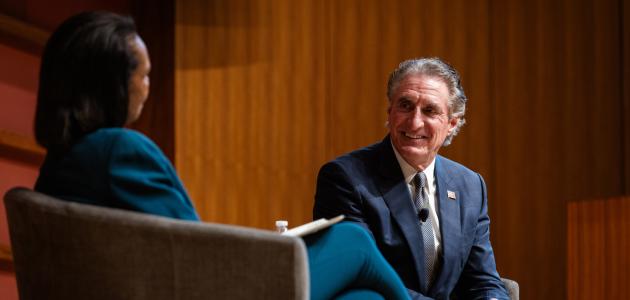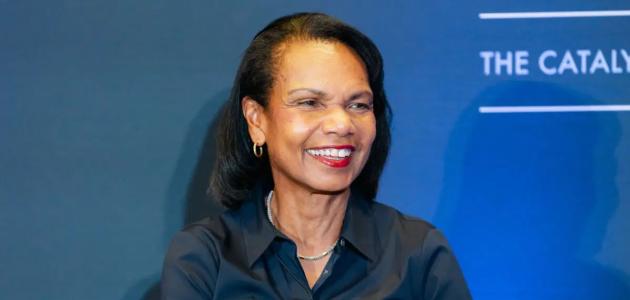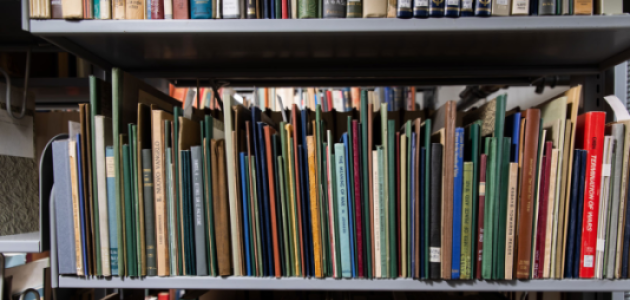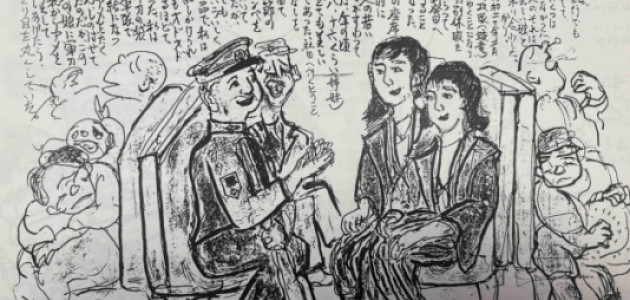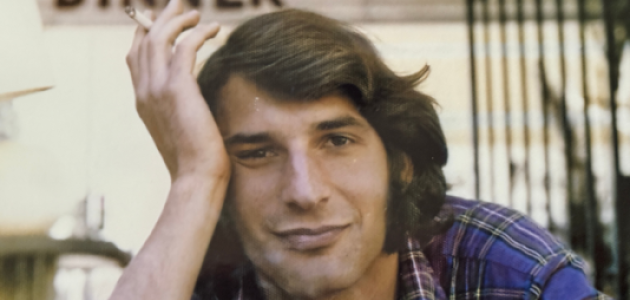Above: Presidents Boris Yeltsin of Russia and Aleksander Kwaśniewski of Poland greet Polish diplomats at the Kremlin. Ciosek is fifth man from the left. Moscow, April 1996
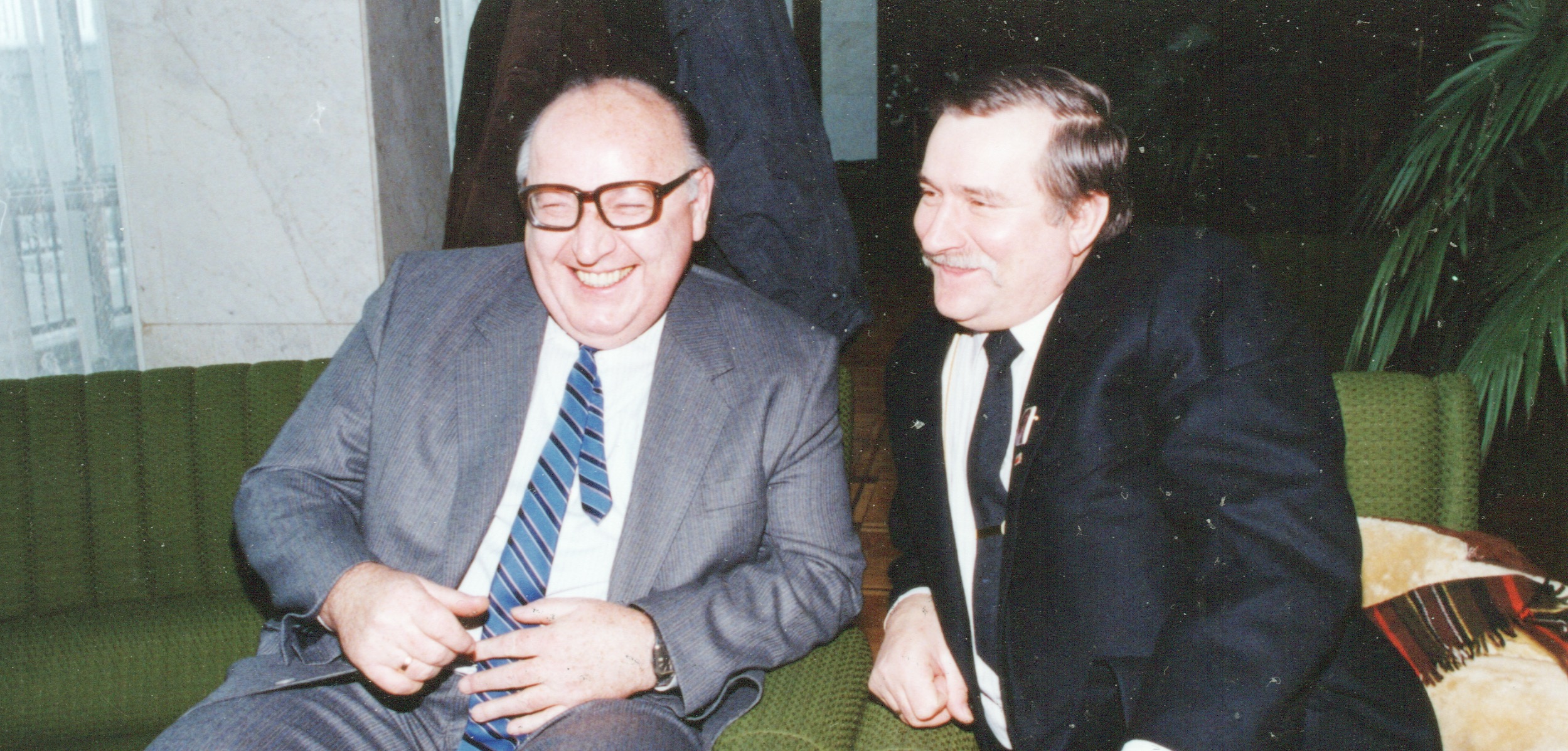
Hoover’s Polish archival collections, the largest and most comprehensive holdings on twentieth-century Poland outside Poland, now include the papers of another key figure in the process of transforming of the country from a Soviet satellite ruled by an authoritarian communist regime into an independent democratic republic. Stanisław Ciosek’s papers and photographs document mostly the years 1980–96, his tenure as minister of labor as well as a Central Committee and Politburo member, endeavoring to contain the rise of the Solidarity trade union movement, followed by nearly seven years of work for his erstwhile adversaries as the new Poland’s ambassador to Moscow.
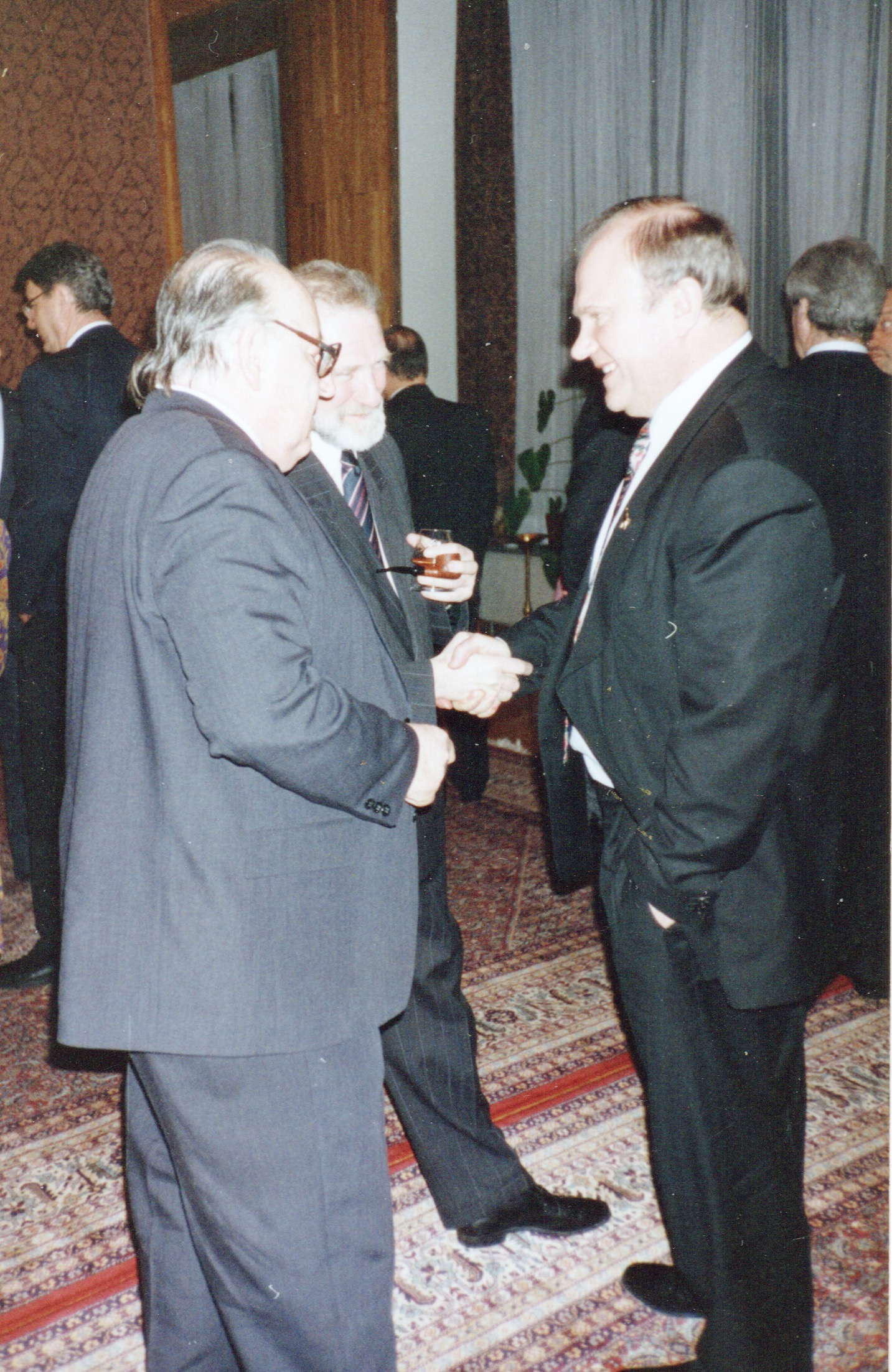
Stanisław Ciosek was born in 1939 in a village in central Poland where both of his parents were schoolteachers with progressive leanings. At twenty he joined the communist Polish United Workers Party, and two years later completed a degree in economics. His first party work assignment was in the Polish Students’ Association, the only government-sanctioned organization for academic youth. He led that organization until the age of thirty-six, when the party found something more age-appropriate for him: the chairmanship of the party and provincial regional government of Jelenia Góra, in the southwestern corner of the country near the Czech and East German borders. Smart, literate, witty, and good-natured, he did well in his assignment and in 1980 was promoted to membership in the Central Committee of the party and transferred to Warsaw. Ciosek’s new specialty was labor and unions, which in Poland of the 1980s meant counteracting the growth of the Solidarity trade union. He was made a full member of the Politburo of the party in 1988 and took part in negotiations with the Solidarity opposition in a series of meetings in Zawrat and Magdalenka, paving the way for the “round table” talks between the Communists and Solidarity opposition in the early months of 1989. These talks, in which Ciosek played a prominent part, made the semi-free elections of June 1989 possible. He ran for a seat in the Parliament during these elections but lost, as did all of the party candidates, some of whom blamed Ciosek for the disaster. He accepted the judgment of the electorate without regret or remorse. He knew that the communist monopoly of power was irrevocably broken in Poland. Other countries of the Soviet bloc soon followed suit.
Always a cautious, pragmatic, and commonsense individual, Stanisław Ciosek took those developments in stride. He had lost whatever faith he had in communism long before Gorbachev’s discovery of glasnost’ and perestroika. Now, fifty years old, he was looking toward the future, ready to offer his talents and experience to the new government. When at the end of 1989 the newly elected Polish president, Lech Wałęsa, along with the new premier, Tadeusz Mazowiecki, tapped him to be Poland’s ambassador in Moscow, he accepted.
Ciosek did not have the calling or the discipline of an archivist, historian, or even a journalist. His Moscow papers are chaotic, with copies of important documents mixed with cryptic scribbles and doodles, yet a trained eye finds in them a lot of information not available elsewhere. Of much help are Ciosek’s “memoirs,” which he added to the collection. Published in 2014, and mostly unnoticed by the reading public, his Wspomnienia (niekoniecznie dyplomatyczne): opowiastki z Polski i Rosji (Memoirs (Not Necessarily Diplomatic): Tales from Poland and Russia) provides something of a guide to his papers. Of much interest in the collection are Ciosek’s efforts to arrange for an orderly evacuation of Soviet/Russian troops from Poland, his meetings with Gorbachev, Yeltsin, and the young Vladimir Putin (still under the wing of Anatoly Sobchak, the mayor of St. Petersburg). Of special interest is Ciosek’s relationship with Gennady Yanayev, Gorbachev’s vice president, and leader of the failed August 1991 coup. Ciosek knew him well from his visits to Moscow as a student leader in the 1970s, and they drank together on many occasions, including a few days before the attempted coup when Yanayev told Ciosek about the plans for a coup to remove Gorbachev. Ciosek sent his wife to Warsaw the next day with an encrypted report of the meeting, but the Polish Foreign Ministry ignored it completely! After returning to Poland in 1996, he became an adviser on Russia and the post-Soviet countries to President Aleksander Kwaśniewski.
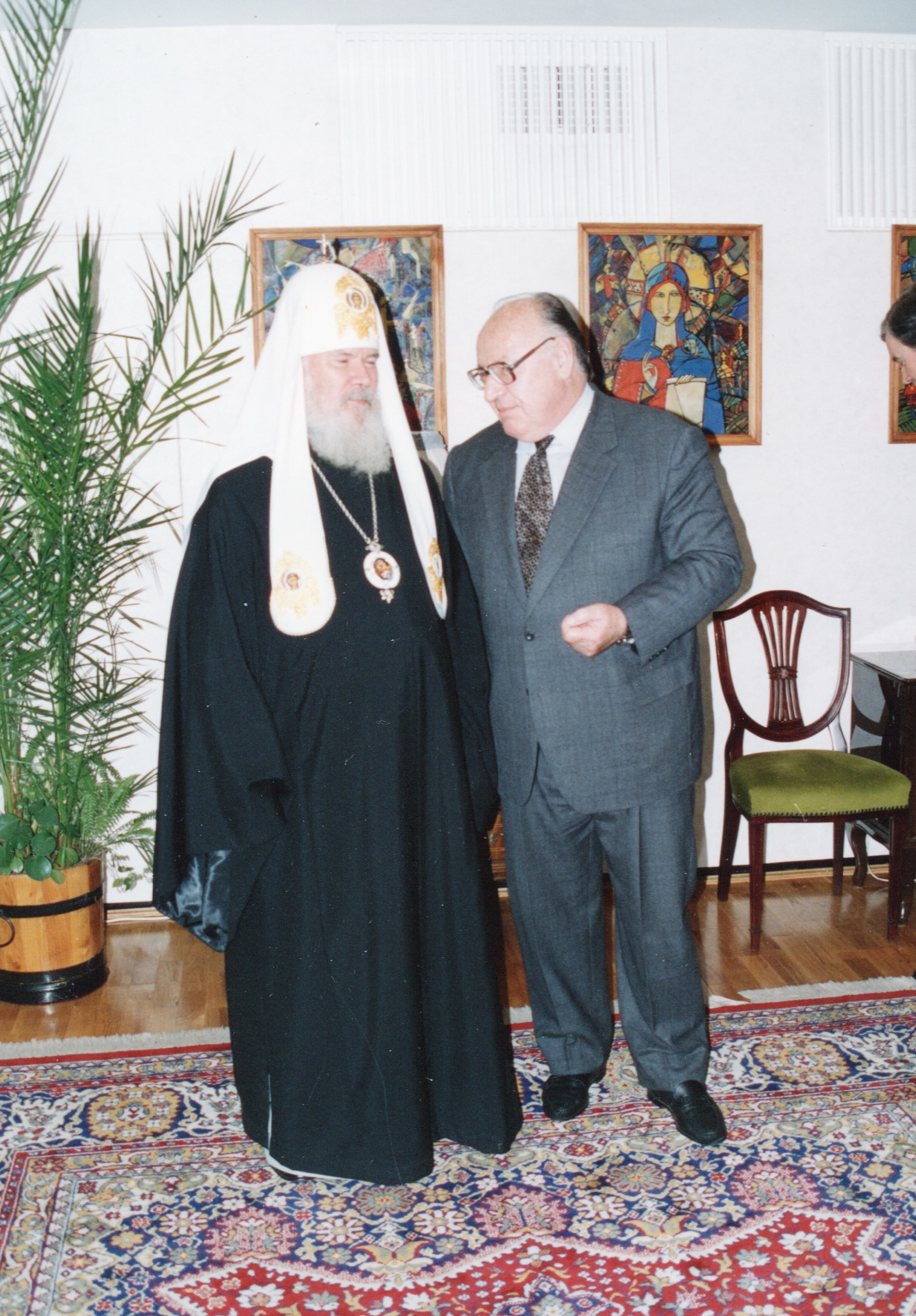
The Ciosek papers, especially the pre-1990 Polish part, complement the collections already at Hoover, especially the papers of Mieczysław Rakowski, premier during 1988–89, and Krzysztof Dubiński, the Polish interior ministry’s recorder of the meetings between the representatives of the Polish communist government and the Solidarity opposition. Ciosek’s ambassadorial papers are a significant source on recent Polish diplomacy and on Russia’s “time of troubles” in the 1990s.
Maciej Siekierski siekierski@stanford.edu




